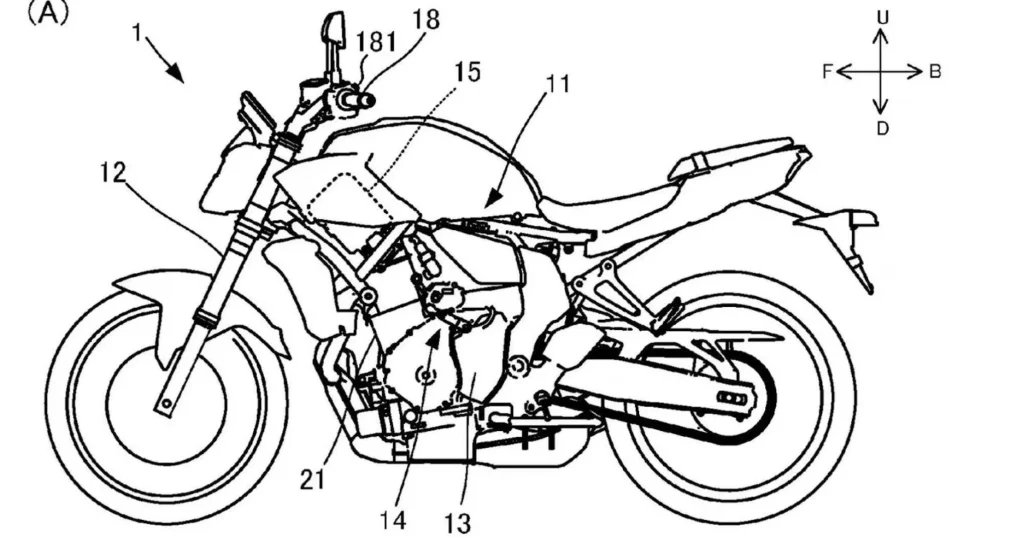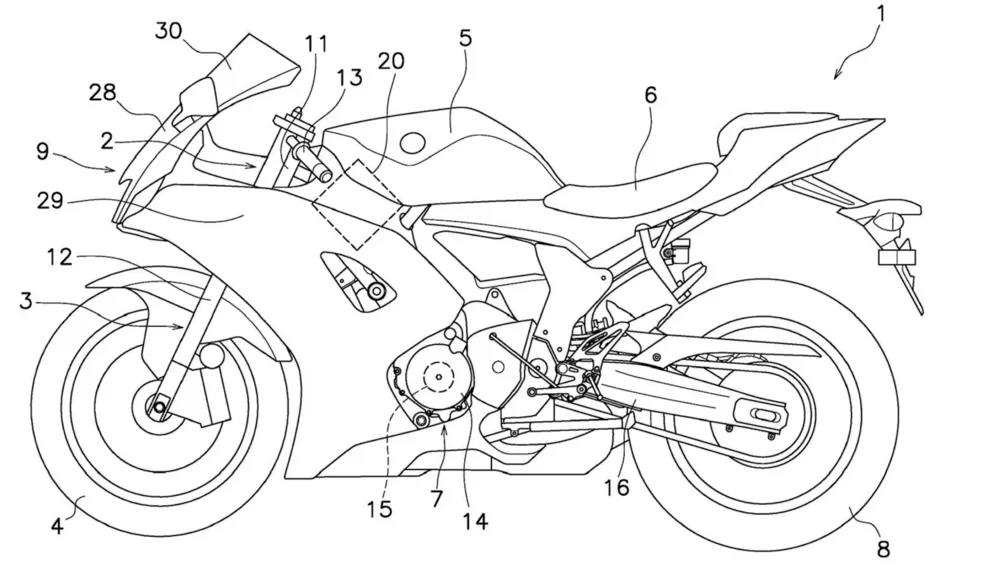Cycle World reported an interesting patent application related to Yamaha. The company based in Iwata has applied for a patent for a semi-automatic transmission to be applied to the CP2 twin-cylinder engine of the MT-07, which in terms of type and segment, seems to aim to counter Honda’s E-Clutch, the semi-automatic transmission installed in the CB650 and CBR650.
In Honda there is a conventional clutch lever for when it is needed and it depends on the driver’s left foot to shift gears.
Yamaha’s version, on the other hand, is a more conventional semi-automatic that eliminates the gear shift pedal and clutch lever, replacing them with a series of buttons mounted on the handlebars.
Yamaha’s new patent application illustrates the system, clearly showing it mounted on a motorcycle built around the CP2 twin-cylinder frame and engine of the MT-07.
This technology is not new to Yamaha, which previously offered its YCC-S system (Yamaha Chip Controlled Shifting), which, mounted on the FJR 1300, automates the clutch and gearbox of a conventional transmission.

Yamaha innovates with the addition of YCC-S to a motorcycle in a price range lower than the FJR1300 and that is a direct rival of Honda’s CB650R equipped with electronic clutch. Since the same twin-cylinder engine is also used in other Yamaha models, we can freely assume that we will also see it in other models.
The system works through speed change and reduction buttons located on the handlebars, which call a pair of electric actuators mounted right above the transmission.
One on the left, to operate the gearbox, and one on the right, to control the clutch. An engine control module filters the requests from the mounted buttons and converts them into clutch and gearbox operations, ensuring optimized starts, gear changes, and braking.
Yamaha’s patent suggests that the system can also be used in fully automatic mode.

In addition to the semi-automatic gearbox, the MT-07 presented in the patent has some differences compared to the current model.
The seat looks different, as do the air intakes on both sides of the tank. The radiator guards also appear to be slightly different, as well as the front wing and, more significantly, the fork is an inverted unit (as already used on the R7) instead of the conventional one on the MT-07.








